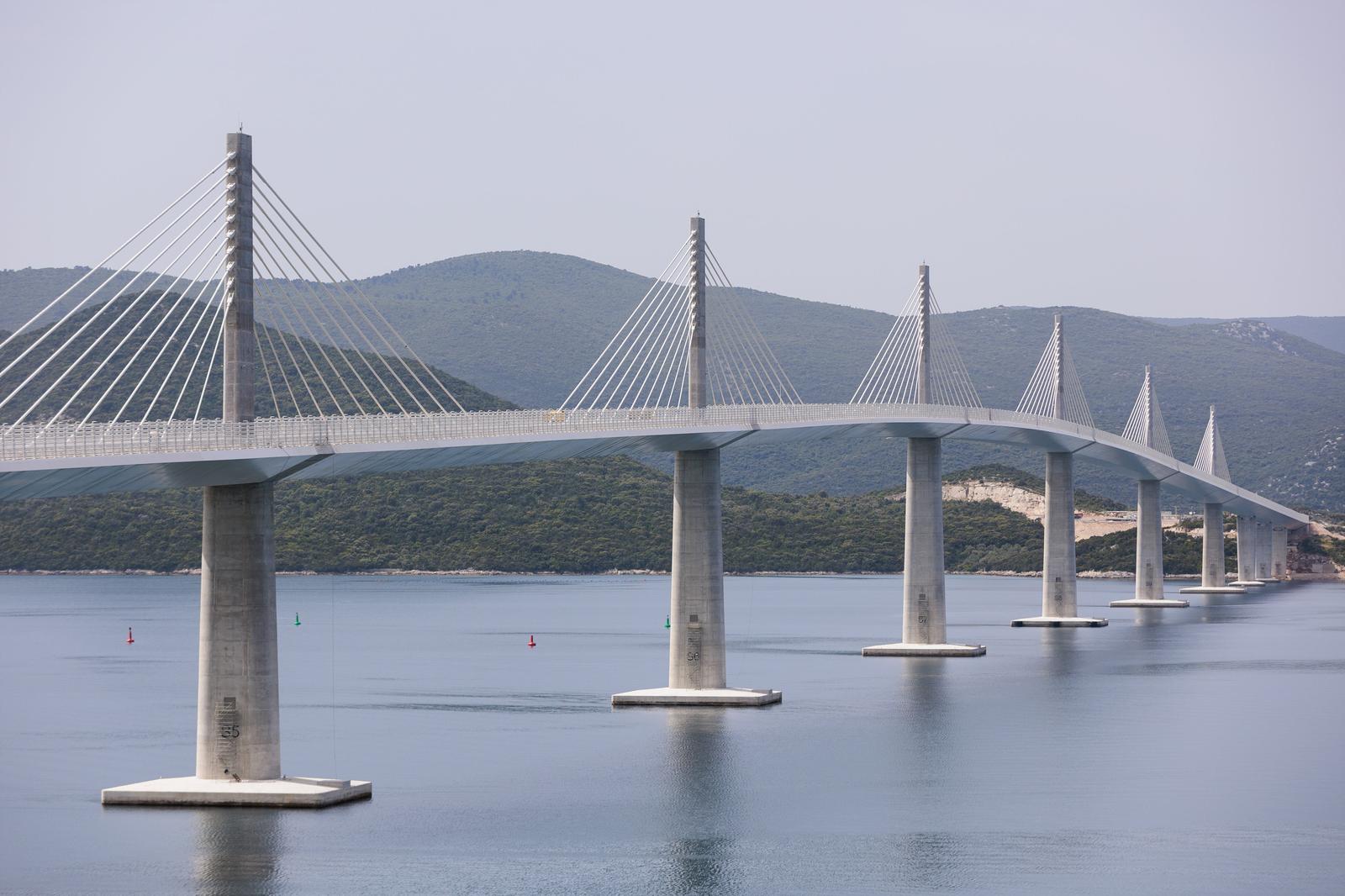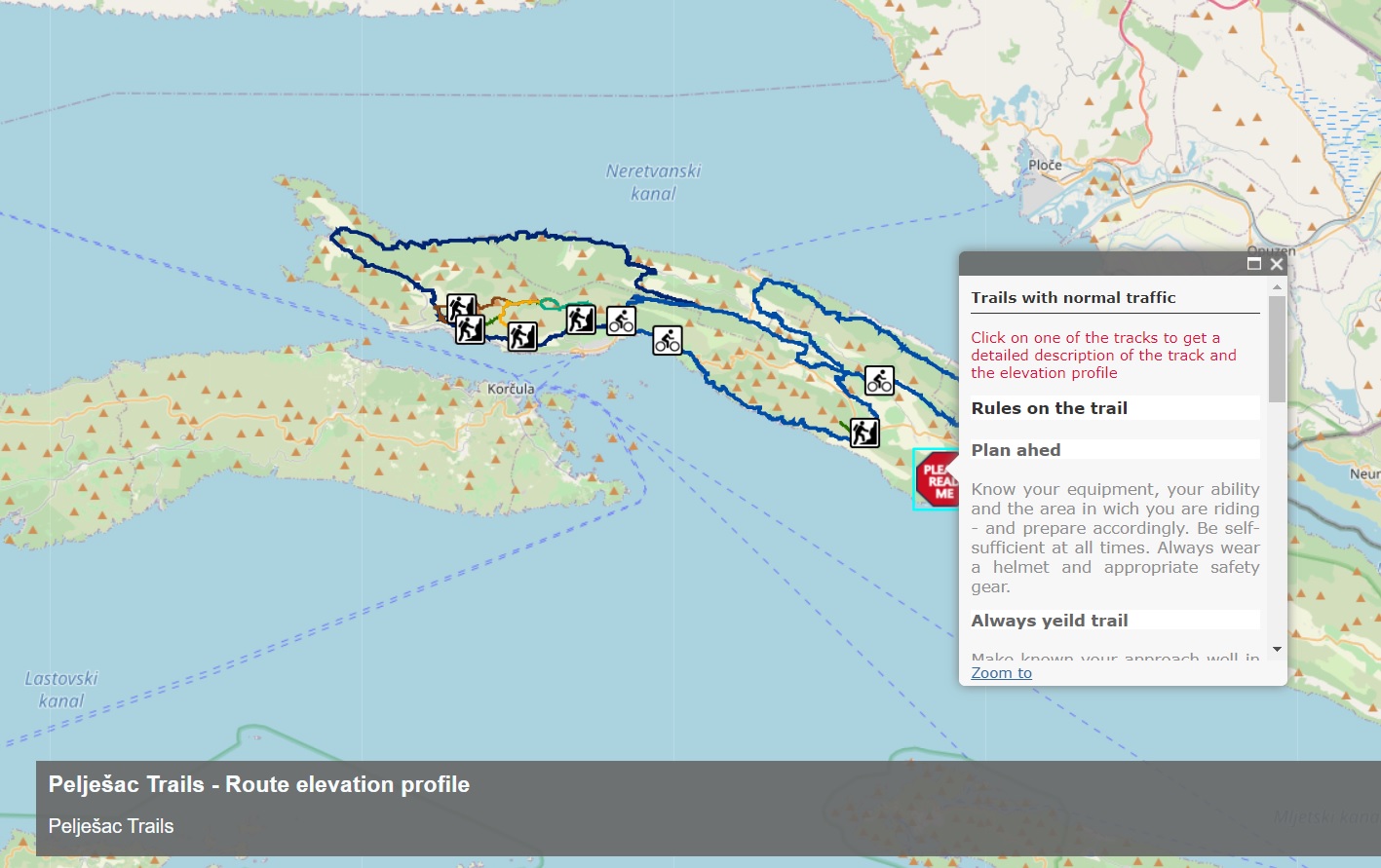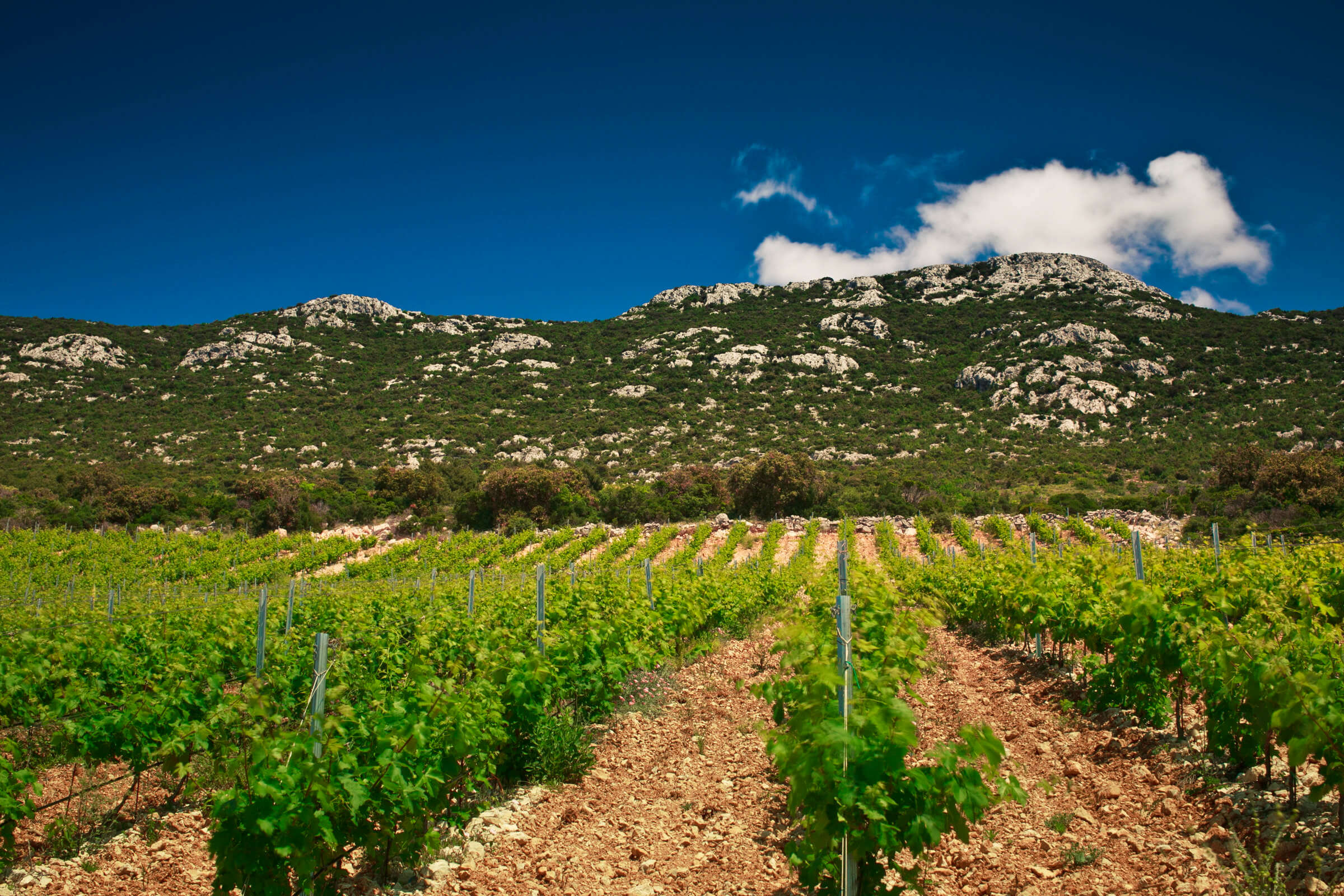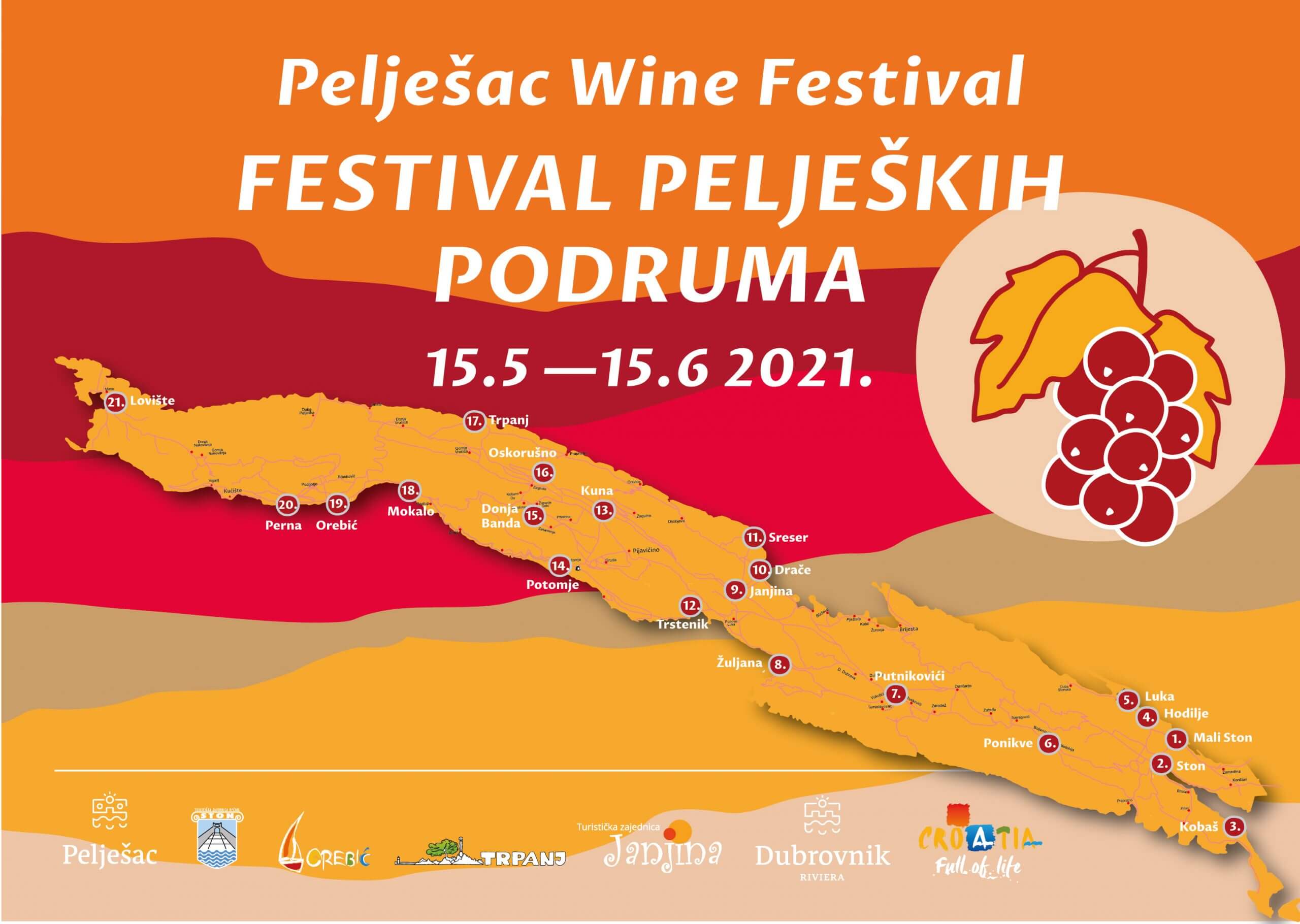Tourist Interest in Pelješac Increases Ahead of Bridge Completion
June 8, 2022 - Tourist interest in Pelješac is increasing and the peninsula is already recording good tourist results. The opening of the Pelješac bridge, which will bring Croatia's second-largest peninsula closer to the mainland, will shorten travel time. This will surely mean the arrival of even more guests.
Peljesac attracts more and more guests from all over the world, reports HRT News.
''We love Orebić! It is very nice here: the weather was good, the food was delicious, all over Pelješac. We are really enjoying it, and maybe we will be back in September''., says Mihael from Poland.
''We have been coming to Viganj since the '80s, for surfing, so we are actually at home here. We will stay for about 3 weeks.'', says Vladimir, a Croat from Germany.
''We travel along the entire Croatian coast, from Zadar to Dubrovnik, we stay in every place for 2-3 days. We decided to come here because we did not know this part of the coast.'', adds Pasqual from France.
Tourism seems to have returned to the "old normal". The numbers in the pre-season are getting closer to the record ones.
''At pre-season, the index is 200 percent better than last year: 52 thousand overnight stays and I can tell you that we achieved 90 percent of turnover compared to 2019. Now, most foreigners in the pre-season come from Germany, so we hope it will continue in the high season.'', said Mladen Đeldum, director of the Orebić Tourist Board.
For two years in a row, the best small hotel in Croatia is an eco-hotel. The first season with the Pelješac bridge will surely remain in good memory. The changes are already visible.

The Pelješac bridge. Image was taken on May 27th. (Photo: Miroslav Lelas/PIXSELL)
''This change has already begun even before the pandemic when houses on Peljesac began to be bought en masse. We are witnessing this because, as the hotel is open all year round, all those foreigners who come in the winter to look for a property stayed with us.'', says Sabina Mikulić, owner of the Adriatic Hotel.
The changes will be most noticeable in Ston, where they are afraid that, until the Ston bypass is completed, it will become a traffic bottleneck on the way to Dubrovnik.
The first cars over the Pelješac bridge should start transiting in the middle of summer. Hopefully, full of tourists eager for vacations.
The Pelješac bridge has been completed, and its commissioning requires the completion of at least some access roads.
''We are located in Zaradeže, a place where in a few months, cars that will first pass through the long tunnel Debeli Brijeg will connect to the road across Pelješac. As we can see, the road is paved at the moment, everything is ready for the fence, and everything should be completed by July 13, when the access roads, together with the Pelješac bridge, should pass a technical inspection.'', the central Dnevnik told HTV's Vicko Dragojević.
Ing. Davor Perić from Hrvatske ceste says that the works at the Zaradeža hub are the most active.
''In this part, from the Pelješac bridge to this place where we are now standing, at the Zaradeža junction, the works are currently the most active. More than 500 people have been hired and the contractor has invested great resources and efforts to reach the July 13th deadline.'', Perić said.
He points out that certain parts of the section are being worked on day and night.
''In some parts of the section, primarily in the longest tunnel on the access roads, the Debeli Brijeg tunnel, work is done 24 hours a day. There are also teams for the completion of construction works, as well as electricians. There is a big crowd on the route and the contractor is really making every effort to finish on time.'', he says.
''Following the Zaradeža junction, the first 10 kilometers of the Ston bypass are expected to be opened this summer, which is about half of the part of the project carried out by the Greek contractor, Avax, and we expect that part, those 10 kilometers, will be ready this summer together with the Pelješac Bridge and the access roads.'', Perić said.
Ston will become a traffic bottleneck on the way to Dubrovnik this summer until the Ston bypass is completed.
''The traffic will end at the Prapratno junction, where it will be directed to the town of Ston, and that will be the case until the complete completion of the project, until the connection to the highway. For that, the last section of 8 kilometers remained, which includes two tunnels and the Ston bridge, and we expect that to be completed by the end of the year.'', concluded Perić.
For more on travel in Croatia, follow TCN's dedicated page.
Pelješac Interactive Map with Cycling and Hiking Routes Available
May 26, 2021 - As part of an effort to strengthen adventure tourism on the peninsula, a Pelješac interactive map is available with five circular mountain biking routes and six hiking routes.
As stated by turistickeprice.hr, tourist communities from Pelješac united at the end of last year to develop tourist products of Pelješac. Specifically, they approached the development of outdoor offers through hiking, cycling, and windsurfing, and five thematic festivals are planned in which visitors would enjoy the flavors of Pelješac, traditional dishes, and the well-known Pelješac wine.
As part of the development of the Outdoor Program, an interactive map of mountain cycling and hiking routes in Pelješac was made. There are currently five circular mountain cycling and six hiking routes on the map. Additional route extensions are planned, as well as the addition of catering facilities and wineries to the map so that guests can easily find their way around the area and get to know the complete offer of Pelješac. Pelješac is rich in wineries and traditional taverns and restaurants, so the combination of outdoors and traditional flavors is quite natural.
On the map, you can see information about the difficulty of the route, the type of surface, description, photos and you can download the GPX track that can be used in various mobile applications and smartwatches. There is also a link to the OsmAnd mobile app on the map, as a suggestion. Otherwise, the app is free to download and works offline.

Pelješac Interactive Map with Cycling and Hiking Trails (Screenshot)
The map shows a total of five mountain bike circular routes with a length of 184 km and six hiking routes with a total length of 39 km. The Tourist Boards of Ston, Janjina, Trpanj, and Orebić note that they have developed an interactive map that cyclists and mountaineers can study without coming to the info center, or looking at the websites of tourist boards. In addition, the trails were made in collaboration with local cyclists who know the terrain best, and thus end-users will be able to discover the most interesting parts of Peljesac, which hides many natural beauties.
You can find the English version of the interactive map of Pelješac HERE, and the Croatian version HERE.
You can learn everything about what the Pelješac peninsula can offer you on your next trip, in Total Croatia’s Pelješac peninsula on a page, HERE. Total Croatia’s articles are now available in your language!
For more information about cycling in Croatia, go to Total Croatia's dedicated page.
For more on travel in Croatia, follow TCN's dedicated page.
Pelješac Cellar Festival Starts Tomorrow on the Famous Dalmatian Peninsula
May 14, 2021 - Starting tomorrow, the Pelješac Cellar Festival will take place in one of the most famous wine regions, and it will include discounts, workshops, and more!
Pelješac is well known for its wines, derived from the iconic Plavac Mali grape, which is responsible for the powerful reds made in the region. For some Croatian wine experts, the Plavac from the slopes of Dingač and Postup are among the best wines in the country.
The fame of the peninsula among wine lovers is indisputable, and to their delight, starting tomorrow a new edition of the Wine Festival will take place in Pelješac, the Pelješac Cellar Festival, and will last for a month.
As hrturizam.hr reports, wineries, shipowners, shellfish farms, family farms, restaurants, and taverns… 53 of them from all over the peninsula joined the largest event on Pelješac so far, the Pelješac Cellar Festival, which starts from Saturday, May 15 until June 15, 2021.

During the festival, the wineries participating in the project will offer their visitors discounts on wine (20% on certain wine palettes), and restaurants and taverns will have menus with traditional Peljesac specialties with a glass of local wine designed specifically for the festival (two menus, one of 120 kuna and one of 180 kuna). The festival will also include educational workshops, professional lectures, and various other events of interest to wine lovers.
‘‘We are glad that a large number of winemakers have joined the Pelješac Cellar Festival, which focuses on Plavac Mali, a trademark of our peninsula and one of the largest wine brands in Croatia. All research confirms that the eno-gastronomic offer is among the first three motives for tourists to come to our country, and our wine empire with famous vineyards such as Ponikava, Dingač, and Postup, has become a real tourist attraction and not only for wine lovers. As part of the Festival on June 4th and 5th, we are organizing the traditional Pelješac Cellars Open Days, an event that usually takes place in December. We hope that this June version will become another traditional wine festival’’, said Slobodan Rosić, secretary of the associations Pelješac Wine Routes and Plavac Mali Pelješac.

The director of the Ston Tourist Board, Fani Slade, pointed out that all four tourist boards from Pelješac are participating in this project in addition to Ston: the Tourist Boards of Janjina, Orebić, and Trpanj, and the idea was realized in cooperation with Feel IQM. He says that the Festival would not have been possible without the support of the associations Ston's Shellfish, Pelješac Wine Routes, and Plavac mali Pelješac, as well as the Ston Walls, Solana Ston, and the Maritime Museum in Orebić.
‘‘We have taken care of epidemiological measures, so there is no mass gathering during the event, and we plan to hold an accompanying program such as wine workshops and conferences online. We also recommend all visitors announce their arrival at the winery, family farm, restaurant, or tavern in advance. We believe that next year the pandemic will be behind us, so the second edition of the Pelješac Cellars Festival will offer a rich entertainment and educational program’’, says Slade.
Croatian wines and grapes are among the best in the world, and you can find more information about them in Total Croatia’s Guide to Croatian Wine HERE. You can also learn more about what the Pelješac peninsula can offer you on your next trip, in Total Croatia’s Pelješac peninsula on a page, HERE. Total Croatia’s articles are now available in your language!
For more on travel in Croatia, follow TCN's dedicated page.
After University, Man Returns to Pelješac to Continue Family Tradition
As Poslovni Dnevnik/Marta Duic writes on the 30th of July, 2019, the Mikulić family from Pelješac entered this tourist season with a bit of a novelty on offer - glamping. With their campsite and their boutique winery in Mokalo and the Adriatic Hotel in Orebić, this investment was a logical next step.
"From classic tents, we've switched over to mega luxury and I don't think we've made a mistake in doing so. This is a unique offer not only in the county, but throughout the region," proclaimed Antonio Mikulić.
Mikulić explained that their Adriatic Hotel is the only one in all of Pelješac that operates for 365 days per year, it used to be a parish church, then it was a school, then it was a shop and an apartment building. He notes that none of the six rooms are the same, and thanks to their beautiful design, they're reminiscent of the old sailboats, which they're named after: Stipan, Paulina, Isac, Jacob, Mimbelli, and Pelag. Done in the eye-catching style of a luxury boat lounge, there is also an a la carte restaurant named Stari Kapetan, the terrace of which is a replica of a seventeenth-century ship.
"Our boutique winery is an upgrade the offer of our family-run hotel and campsite, accounting for about 25 percent of this business. Since we live in Orebić, the tourist centre of Pelješac, our market is right there on our doorstep and there's almost no guest who visits our winery who doesn't end up buying our olive oil or our family-branded wine. Although we sell almost everything we produce, we participate in fairs throughout the year, organise presentations, and send off our wines to be judged,'' added Mikulić.
This is a local Pelješac family which has always cultivated vineyards and produced wine. According to Mikulić, his grandfather Josip also worked in the highest quality wine, Plavac, which is cultivated in the family's vineyards in Pelješac to this very day, and in his honour, the wine bears the name Don Josip.
"As a kid, I went with my grandfather to the vineyards and to the cellar, and after graduating from university in Zagreb, I decided to return to Pelješac and devote myself to the job I love the most. We started producing wine in a serious way back in 2014, when we equipped the winery with modern technology and all of the equipment.
Since the guests of the family hotel responded excellently to the first bottles of wine, in March last year, we decided to open our boutique winery on the slopes of Postup (village in Pelješac), where we also do tastings and try to tell the story of the beauty of this peninsula, the weight that Pelješac carries, and premium wines,'' explained Mikulić. They annually produce about 15,000 bottles of Plavac Mali and about six thousand bottles of Pošip.
The Pošip wine is bought from subcontractors from the nearby island of Korcula, and about 80 percent of the Plavac comes from their vineyards that cover 2.5 hectares in the best positions on the slopes of Postup, while another 20 percent is purchased from subcontractors, winemakers who have vineyards next to theirs. In addition to the peninsula, these wines are present in family-run small hotels and in better restaurants, they can be found in Split and Zagreb for sale, and can also be purchased online.
Given that their main priority is high quality and that a good deal of wine is sold to wineries, as well as in the restaurant of the family's hotel and camp, they're not focused on exporting.
"The tasting room looks like an old Dalmatian tavern and is especially interesting to foreign guests, and often they stay longer than planned in the relaxed atmosphere. In the few years that we've been open, we have had guests from almost all European countries, as well as from all over the world.
The most numerous are guests from Germany, Austria, the USA and the Scandinavian countries. These modern guests want to get to know the place they've come to, they want to taste authentic food and wines, and they are especially interested in Plavac which is our indigenous variety, and best results are known to be provided on Pelješac.
We also worked hard on the winery last winter, we made a bank and an archive of wines, so we've rounded it all together with a diverse offer for all guests - from the winery, the beach bar, the beach restaurant, the glamping, the camp, the apartments, the rooms, the hotel, and the restaurant right in the centre of Orebić,'' concluded Mikulić.
Make sure to follow our dedicated lifestyle and business pages for much more.
Tourism Development Plan in Context of Pelješac Bridge Presented
As Morski writes on the 24th of July, 2019, the DUNEA regional agency, in co-operation with the Institute for Tourism, presented a document titled the "Desirable Tourism Development Plan for the Pelješac Peninsula in the contect of the Construction of Pelješac Bridge" in Ston, which is the result of the successful implementation of the COASTING project, which deals with the establishment of integral coastal zone management for sustainable tourism.
As highlighted in the presentation, this document represents the first step in looking at the immediate and indirect effects of the Pelješac Bridge construction on the existing/desired tourist product of the peninsula, but also on the challenges that the authorities in all units of local self-government should respond to in a timely manner.
Representatives of regional and local authorities, civil society associations and businessmen from the Pelješac area, who participated in the workshops organised by the DUNEA regional agency back in April and May in Pelješac, provided a better insight into the role of tourism and its significance for the Pelješac peninsula, the challenges of tourism development, and aspects of the future development of the peninsula, as well as the results of the joint work have now become part of the same plan.
It was also said that the construction of Pelješac Bridge is not only a capital project in the development of the county traffic's infrastructure, but also a project that will significantly affect the quality of life of the local community, mainly due to diverting traffic flows and increasing the traffic burden on one part of the Pelješac peninsula, in order to examine the influence of the construction of Pelješac Bridge on the predominant model of tourism development. It is, in turn, to do with the various economic, environmental and/or social impacts that bridge construction can cause, as the document emphasised.
Representatives of the Ston, Janjina, Trpanj and Orebić Municipalities, the Dubrovnik-Neretva County Tourist Board, the Institute for Physical Planning of Dubrovnik-Neretva County, the Public Institution for the Management of Protected Areas of Nature of Dubrovnik-Neretva County, the local action group FLAG "South Adriatic ", Orebić's municipal development agencies, the local action group LAG 5 and other interested stakeholders were also present at the document's presentation.
Along with the DUNEA regional agency, the partners of the project are the Lazio Region (Italy), the Regional Council of Gozo (Malta), the Sapienza University of Rome (Italy), the AMP Metropolis (France), the Epirus Region (Greece), the Saranda Municipality (Albania) and the Sicilian Region (Italy).
The project, worth around 1 million euros was contracted under the Interreg Mediterranean program with an 85 percent co-financing rate and the DUNEA regional agency's budget of 89,490 euros.
Make sure to follow our dedicated lifestyle page for much more.


